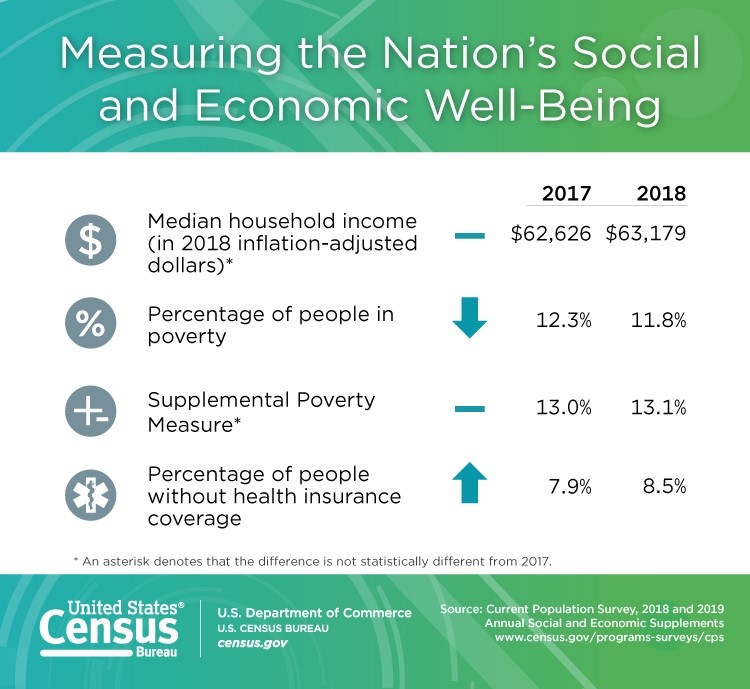New poverty data makes it clear – there is much work to do
On September 10, the U.S. Census released its Income, Poverty and Health Insurance Coverage in the United States: 2018 report, outlining the latest data on poverty in America. The results were mixed. In 2018:
- The official poverty rate dropped from 12.3 percent to 11.8 percent; an estimated 38.1 million people were living in poverty last year (down 1.4 million from 2017).
- The child poverty rate dropped from 17.4 percent to 16.2 percent; 11.8 million children were living in poverty in 2018.
- The number of Americans without health insurance increased for the first time in ten years from 25.6 million in 2017 to 27.5 million in 2018. Without your advocacy to protect Medicaid from deep cuts in 2017, this number would have been far worse.
- Median household income was $63,179 in 2018, which was not statistically different from the 2017 median.
- Asian household are the only group that saw a statistically significant increase in real median household income with an increase of 4.6 percent to $87,194. Real median income for non-Hispanic White ($70,642), Black ($41,361), and Hispanic households ($51,450) households were not statistically different from 2017.
In addition, the Census also released its annual Supplemental Poverty Measure,* which is seen as more accurate than the official poverty measure.** In 2018, the SPM poverty rate was 12.8 percent (about 41.4 million people), not statistically different from 2017 (13.0 percent). The SPM also showed the impact various government programs had on poverty in 2018.
- The Earned Income Tax Credit (EITC) and Child Tax Credit (CTC) lifted 8.9 million above the federal poverty line, most of them children.
- SNAP lifted 3.2 million people above the poverty line.
- Housing subsidies lifted 3.0 million people above the poverty line.
- Social Security continues to be the largest anti-poverty program in the U.S., lifting 27.2 million people above the poverty line last year.
- Medical expenses accounted for the largest factor in forcing people into poverty; it caused 8 million people to fall below the poverty line last year.
While it is encouraging that poverty did not increase between 2017 and 2018, we still have tens of millions of Americans living in poverty. It is clear is that there is still much work to do.
TAKE ACTION: Help reduce poverty in America by submitting a letter to the editor to your local paper urging your member of Congress to support expansions of the EITC and CTC in any new tax bill this fall. As noted above, the EITC and CTC lifted nearly 8 million people above the federal poverty line last year, but many are still left out. Five million workers without children in the home are pushed into or deeper into poverty each year because Congress set their EITC too low. Millions of America’s lowest income children are completely excluded from the CTC. Submit your letter today telling your members of Congress that if Congress does a tax bill this fall, it must include expansions of the EITC and CTC for workers and families.
*After the SPM was released in September 2019, Census officials discovered an error in their calculations. An updated SPM was released on October 7, 2019. The SPM links and statistics in this post are the updated versions.
**The official poverty measure (OPM) is based on food costs. When it was created in the 1960s, food accounted for about one-third of the average household budget. Government officials therefore estimated the cost of the minimum food diet per household in 1963 and multiplied it by 3 to get the OPM (the OPM is updated each year to reflect current food costs). However, today food only accounts for about one-sixth of household expenses as the costs of housing, health care, and transportation have risen. Yet, the OPM has not been updated to reflect these changes. The Supplemental Poverty Measure (SPM) was created in 2011 to provide a more accurate poverty measure for analysis and research, but eligibility for government benefits and the like are still based on the OPM. For more on the difference between the OPM and SPM, see this chart.
